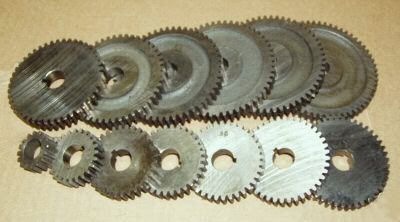Todd Blakemore
Plastic
- Joined
- Apr 21, 2007
- Location
- Fingerlakes, Ny
Hello, I just picked up a 9" south bend and a craftsman model 109 0703 yesterday afternoon for a price I couldn't resist.
I used to work in a small machine shop in highschool and have a little bit of experience with lathes and mills, now keep in mind it's been quite some time since I've worked in a machine shop... so I'm sure I'll have quite a few questions.
Anyway, I'm sure you don't really care about that here's a couple pics of the lathes (haven't even gotten a chance to get them out of my car yet.)
here's a couple pics of the lathes (haven't even gotten a chance to get them out of my car yet.)




I plan on cleaning them up and getting back into metal work. From my brief look at it, I wasn't able to see any serial # on the way's so I'm guessing that they've been reground (I'll know more once I get it out and on the ground for clean up.
Any suggestions on what I should use to clean the grease/rust/crud from it? My plan (at the moment) is to use wd-40 and a cloth to see how bad things were, then go at the rust with steelwool if needed. Smaller Parts I can get off will be de-greased and then I'll use electrolysis to remove the rust.
I kinda like the old 'patina' so to speak that is on it at the moment so I haven't thought about re-painting.
Thoughts, ideas, suggestions?
Thanks in advance
-Todd
I used to work in a small machine shop in highschool and have a little bit of experience with lathes and mills, now keep in mind it's been quite some time since I've worked in a machine shop... so I'm sure I'll have quite a few questions.
Anyway, I'm sure you don't really care about that
 here's a couple pics of the lathes (haven't even gotten a chance to get them out of my car yet.)
here's a couple pics of the lathes (haven't even gotten a chance to get them out of my car yet.)I plan on cleaning them up and getting back into metal work. From my brief look at it, I wasn't able to see any serial # on the way's so I'm guessing that they've been reground (I'll know more once I get it out and on the ground for clean up.
Any suggestions on what I should use to clean the grease/rust/crud from it? My plan (at the moment) is to use wd-40 and a cloth to see how bad things were, then go at the rust with steelwool if needed. Smaller Parts I can get off will be de-greased and then I'll use electrolysis to remove the rust.
I kinda like the old 'patina' so to speak that is on it at the moment so I haven't thought about re-painting.
Thoughts, ideas, suggestions?
Thanks in advance
-Todd








